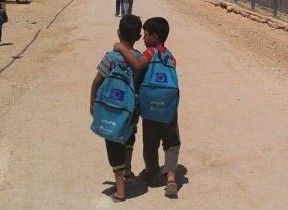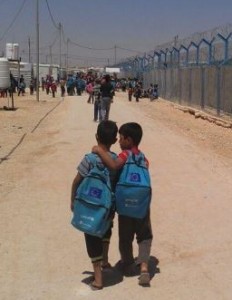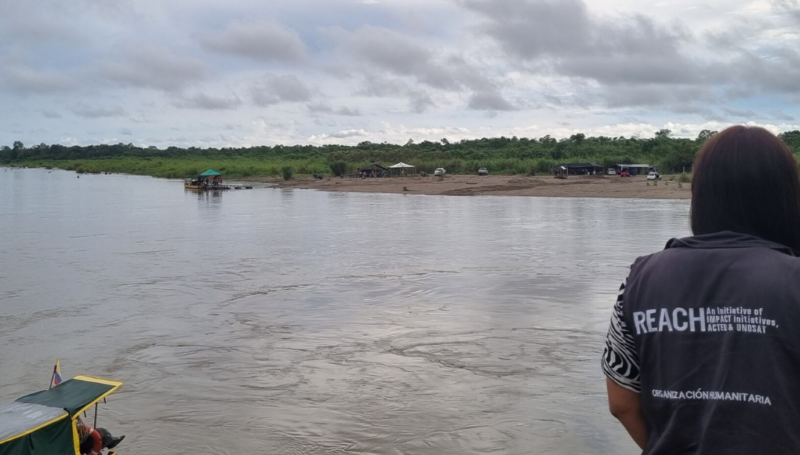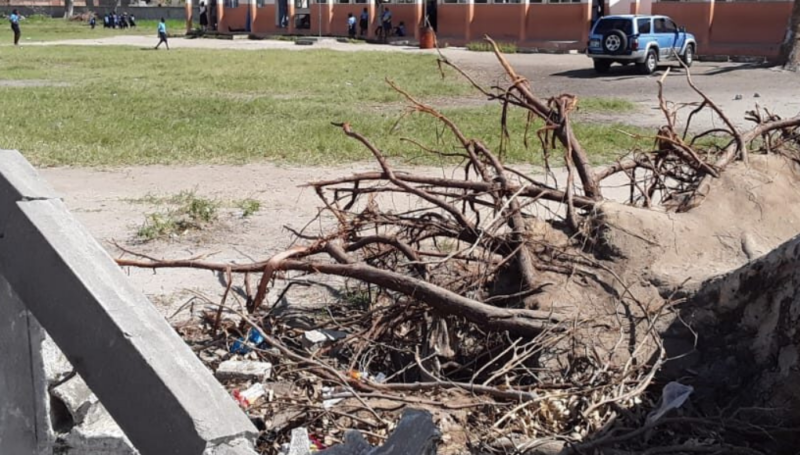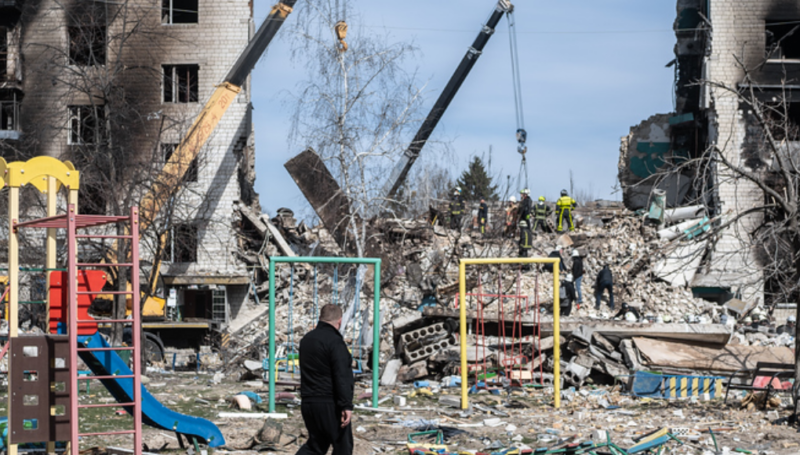Children make up over half of the Syrian refugees in Jordan and are particularly vulnerable to the profound impact of the ongoing conflict. To continue to provide effective programming and support, humanitarian actors require current and up-to-date information to assess service provision in sectors particularly important to child development.
UNICEF, in collaboration with REACH, led two comprehensive child-focused assessments (CCFA), surveying every household in both Za’atari and Azraq refugee camps from February to March 2015. The assessments aimed to fill key information gaps, with a focus on UNICEF-supported programming areas of water, sanitation and hygiene (WASH), health, education, youth, and people with disabilities. In Za’atari camp, the study was an important update to existing information available from a previous exercise which was conducted over a year ago. In Azraq camp, the exercise has created an invaluable baseline of information to assess improvements over time, as, to date, there have been no comprehensive studies conducted to provide an in-depth understanding of current service provision and the on-going needs of camp residents.
Open since July 2012, services in Za’atari camp are relatively well established. Since the Joint Education Needs Assessment in 2014, there have been notable developments in educational attendance, increasing from 52% to 65%, with a narrowing gap between attendance of boys and girls. However, more needs to be done to ensure inclusive education, particularly for the third of children that do not access any type of education and for more than 60% of children with disabilities who stated that their main reason for not attending school was due to their condition. Programming should also target youths aged 16-24, 92% of whom are currently not in any form of employment, training or unpaid volunteering, presenting a risk of disenfranchisement and de-motivation due to lack of engagement in productive activities.
Azraq camp, which opened just over a year ago in April 2014, continues to receive new arrivals, with on-going fluctuations to the camp population. Despite being in the early stages of its development, vital camp infrastructure in already in place, with almost all households using camp WASH centres. 57% of school-aged children living in Azraq camp are currently attending formal education, with minimal difference between sexes (56% of boys and 58% of girls). However, more than half of the children below the age of 5 have still not been fully vaccinated for polio and over a quarter of children remain unvaccinated against measles. In addition, there is an urgent need for services targeting children with disabilities, over half of whom are out of school and 73% of whom have never been visited by a disability-focused organisation. Similar to Za’atari camp, the assessment has highlighted the need for programming that promotes productive and remunerative activities for the 87% of youths (16-24 years) who are not engaged in any kind of training, paid employment or unpaid volunteering and are particularly at risk of disengaging from the camp community.
The assessments in each camp have played an important role in highlighting the needs and vulnerabilities of the populations, as well as areas for improvement in the access to and provision of current services, in the assessed sectors. In both assessments, some common priority intervention areas were identified, particularly in the education and youth sector. Among these, outreach programmes to integrate or reintegrate out-of-school children into the formal education system; targeted intervention to better accommodate children with disabilities into the schooling environment; and development of informal learning and volunteering opportunities for the vast proportion of youth currently out of employment or training have been highlighted as priority concerns.
In this way, the analysis has enabled the identification of priority interventions, targeting those most in need, ensuring that activities and services are effectively designed and implemented to contribute to improving the lives of vulnerable children and their families.
For the full report on Za’atari camp, read here: Comprehensive Child Focused Assessment Za’atari Refugee Camp, June 2015. Individual factsheets for each programming area i.e. WASH, Health, Education/ Youth, and Disability are also available.
For the full report on Azraq camp, read here: Comprehensive Child Focused Assessment Azraq Refugee Camp, June 2015.
Image: Children walking to school in Za’atari camp.





